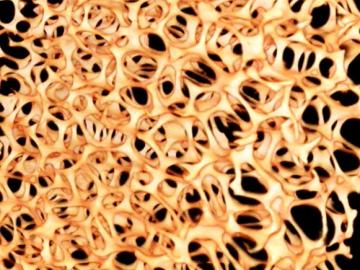Filter News
Area of Research
- (-) Neutron Science (37)
- Advanced Manufacturing (8)
- Biological Systems (1)
- Biology and Environment (56)
- Biology and Soft Matter (1)
- Building Technologies (3)
- Clean Energy (109)
- Climate and Environmental Systems (2)
- Computational Biology (1)
- Computational Engineering (1)
- Computer Science (9)
- Electricity and Smart Grid (1)
- Functional Materials for Energy (2)
- Fusion and Fission (15)
- Fusion Energy (6)
- Isotopes (3)
- Materials (98)
- Materials for Computing (6)
- National Security (30)
- Nuclear Science and Technology (11)
- Quantum information Science (3)
- Renewable Energy (1)
- Supercomputing (70)
- Transportation Systems (1)
News Topics
- Artificial Intelligence (2)
- Bioenergy (1)
- Biology (2)
- Biomedical (2)
- Clean Water (1)
- Computer Science (3)
- Cybersecurity (1)
- Decarbonization (1)
- Energy Storage (5)
- Environment (5)
- Frontier (1)
- Machine Learning (1)
- Materials (3)
- Materials Science (4)
- Microscopy (1)
- National Security (1)
- Neutron Science (28)
- Nuclear Energy (1)
- Physics (3)
- Quantum Science (2)
- Security (1)
- Space Exploration (1)
- Summit (1)
Media Contacts

Textile engineering researchers from North Carolina State University used neutrons at Oak Ridge National Laboratory to identify a special wicking mechanism in a type of cotton yarn that allows the fibers to control the flow of liquid across certain strands.

More than 50 current employees and recent retirees from ORNL received Department of Energy Secretary’s Honor Awards from Secretary Jennifer Granholm in January as part of project teams spanning the national laboratory system. The annual awards recognized 21 teams and three individuals for service and contributions to DOE’s mission and to the benefit of the nation.

Cement trucks entering and exiting the Spallation Neutron Source are a common sight as construction of the VENUS neutron imaging beamline progresses. Slated for completion and commissioning in 2024-2025, VENUS is the twentieth neutron instrument at SNS and will offer many new capabilities.

Three ORNL scientists have been elected fellows of the American Association for the Advancement of Science, or AAAS, the world’s largest general scientific society and publisher of the Science family of journals.

Illustration of the optimized zeolite catalyst, or NbAlS-1, which enables a highly efficient chemical reaction to create butene, a renewable source of energy, without expending high amounts of energy for the conversion. Credit: Jill Hemman, Oak Ridge National Laboratory/U.S. Dept. of Energy

ORNL computer scientist Catherine Schuman returned to her alma mater, Harriman High School, to lead Hour of Code activities and talk to students about her job as a researcher.

An international team of scientists, led by the University of Manchester, has developed a metal-organic framework, or MOF, material

Scientists at the U.S. Department of Energy’s Brookhaven National Laboratory have new experimental evidence and a predictive theory that solves a long-standing materials science mystery: why certain crystalline materials shrink when heated.

Two of the researchers who share the Nobel Prize in Chemistry announced Wednesday—John B. Goodenough of the University of Texas at Austin and M. Stanley Whittingham of Binghamton University in New York—have research ties to ORNL.

Researchers at Oak Ridge National Laboratory demonstrated that metal foam enhances the evaporation process in thermal conversion systems and enables the development of compact HVAC&R units.




